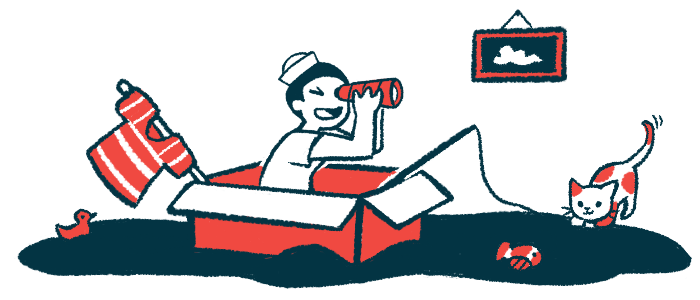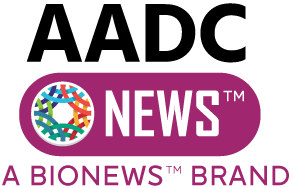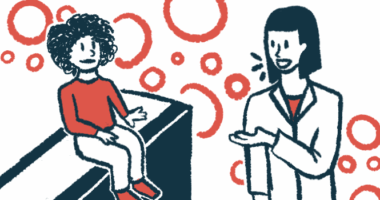Computer-guided surgery delivers gene therapy to 2 children
Cases show technique 'both feasible and safe' in AADC, researchers say

Surgery guided by MRI and computer navigation safely and accurately delivered Upstaza (eladocagene exuparvovec, marketed as Kebilidi in the U.S.) in two children with AADC deficiency, a study reported.
“Gene therapy for AADC deficiency proved both feasible and safe, with early clinical improvements observed in motor function and symptom control,” the researchers wrote. “This technique offers a promising alternative to frame-based methods and expands treatment options.”
The study, “Frameless intraputaminal delivery of gene therapy with eladocagene exuparvovec in patients with aromatic L-amino acid decarboxylase deficiency: safe and efficient results,” was published in Child’s Nervous System.
AADC deficiency is caused by mutations in the DDC gene, which encodes the aromatic L-amino acid decarboxylase (AADC) enzyme, which is essential for producing dopamine and serotonin in the brain. These chemicals help regulate movement, mood, and various bodily functions. Without AADC, their levels drop, and their precursors accumulate, disrupting brain signaling.
Symptoms usually begin in early infancy and range from mild to severe. Common AADC symptoms include delayed development, muscle weakness, and stiffness. Disease severity depends on how much of the enzyme the body can still produce and how well it works, which varies with each patient’s genetic mutations.
Gene therapy aims to ease symptoms
PTC Therapeutics’ Upstaza contains a working version of the DDC gene carried inside an engineered virus that delivers it into nerve cells, enabling them to produce the missing enzyme. This is expected to restore the production of dopamine and serotonin in the brain, easing symptoms.
Upstaza is approved for children and adults with AADC deficiency across the spectrum of the disease. The treatment is infused directly into the brain’s putamen using stereotactic surgery, a procedure that uses MRI guidance to place a thin cannula in the region where the enzyme’s activity is most critical. In the U.S., the only cannula approved to deliver the gene therapy is the SmartFlow Neuro cannula.
Doctors usually use a metal frame fixed to the patient’s head to guide the cannula. A new approach, known as frameless image-guided surgery, may make the procedure more comfortable for the patient while reducing its duration.
The team of researchers in Russia described their experience with frameless surgery guided by MRI and computer navigation in two children with AADC deficiency caused by two different genetic mutations. Before surgery, high-resolution MRI scans were taken to map the safest and most accurate paths into both sides of the putamen.
The first patient was a 6-year-old boy with minimal motor skills. He could not hold his head up, sit, crawl, or walk. He also had delayed speech, excessive sweating, and choking when swallowing. Before gene therapy, he was treated with selegiline, pramipexole, trihexyphenidyl, vitamin B6, folic acid, and melatonin.
The second was a 7-year-old boy with more severe symptoms, including stiffness and muscle weakness, frequent oculogyric crises (involuntary movements of the eyeballs into a fixed position), excessive drooling, sleep problems, and low weight. He had been prescribed selegiline, pramipexole, trihexyphenidyl, vitamin B6, melatonin, and diazepam.
For frameless surgery, MRI scans were uploaded to a planning station to reconstruct each patient’s anatomy and plan a surgical path for therapeutic delivery on each side of the brain. Surgeons then used a navigation software with real-time guidance to help them align their instruments along a planned path.
Each child received 0.32 milliliters of Upstaza via the SmartFlow Neuro cannula. During the infusion, the surgeons used a Z-pattern technique, pulling the cannula back by two millimeters (less than 0.1 inches) every 9 minutes. This created tiny deposits of the gene therapy along the planned paths, making sure it spread evenly.
Both surgeries were completed accurately and more quickly than would be expected with a fixed head frame. There were no complications during or after surgery. One child had a small cyst from a lack of blood flow seen on a follow-up MRI scan taken one month after surgery, but it caused no symptoms.
Both children improved in the first two months after surgery. They had fewer oculogyric crises, fewer episodes of excessive involuntary movement, and better head control. The 6-year-old began to form words, and the older boy’s stiffness and excessive drooling stopped. No serious side effects were reported.
“This rapid clinical improvement is notable, especially in the context of severe AADC deficiency, which is generally associated with poor or significantly delayed therapeutic response,” the researchers wrote, concluding that frameless, image-guided gene therapy for AADC deficiency is feasible, safe, and may lead to early improvements in movement.
“Additional research and long-term follow-up are essential to determine the sustained efficacy of gene therapy and its potential to benefit a broader spectrum of patients,” particularly those with severe symptoms who have shown “limited response” to previous therapies, the researchers noted.







